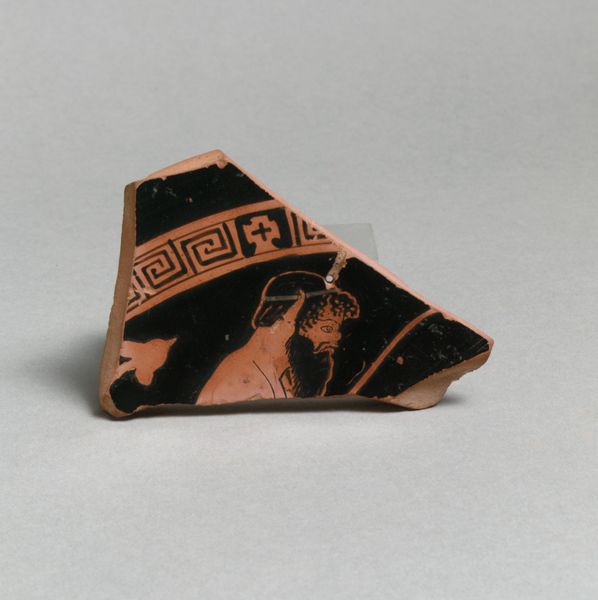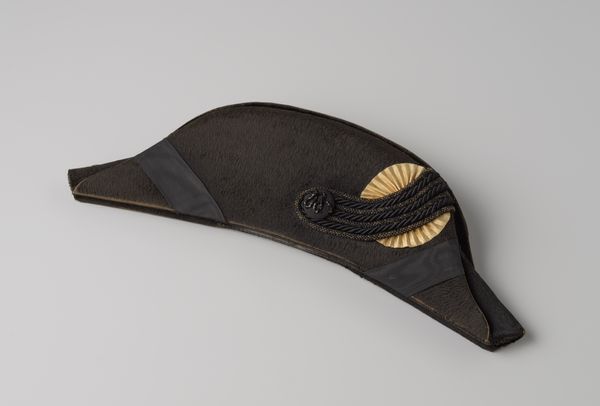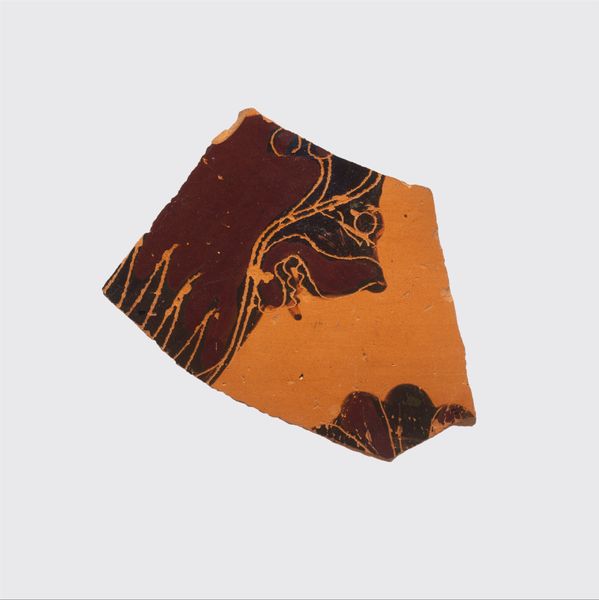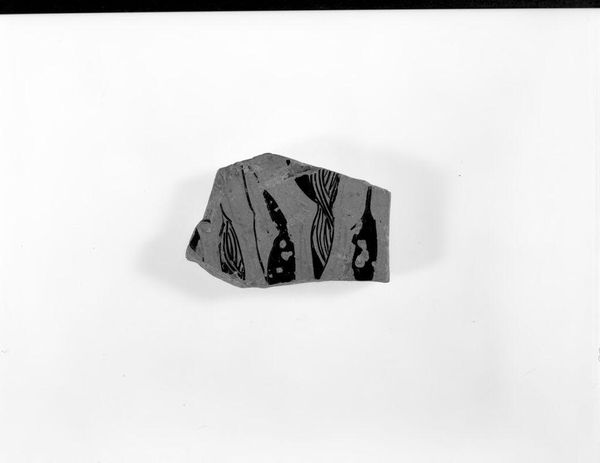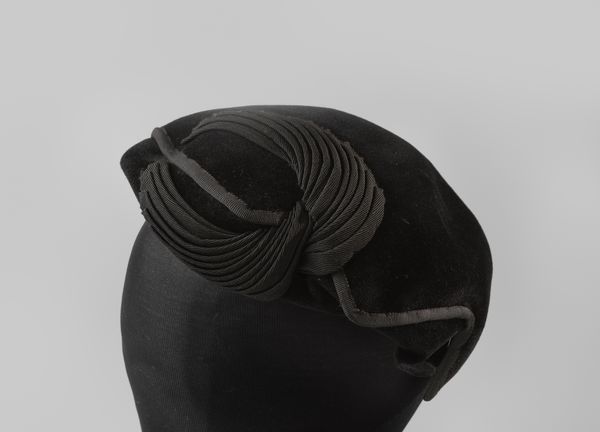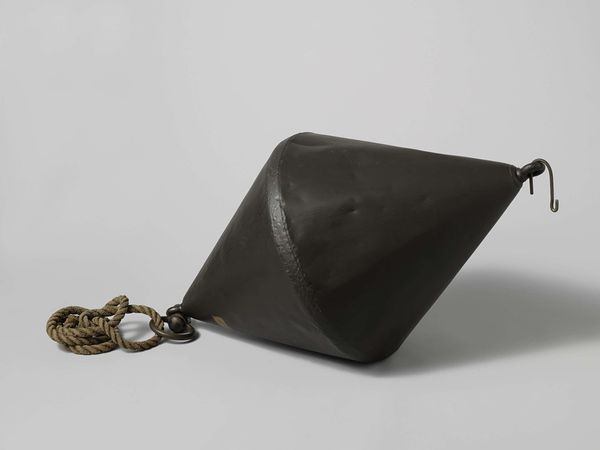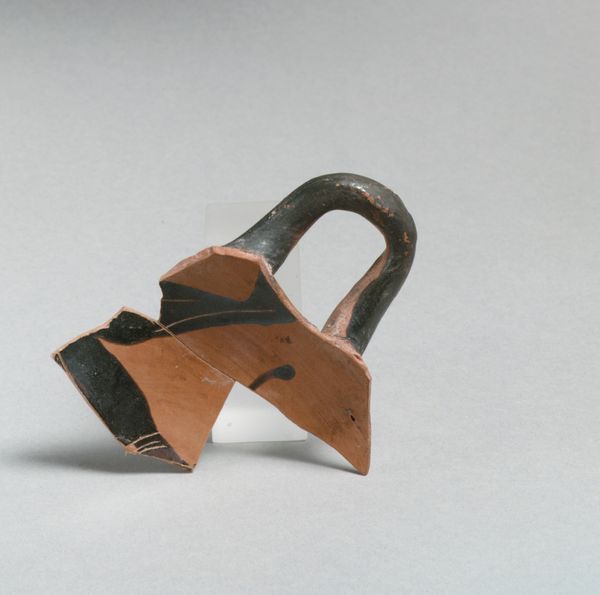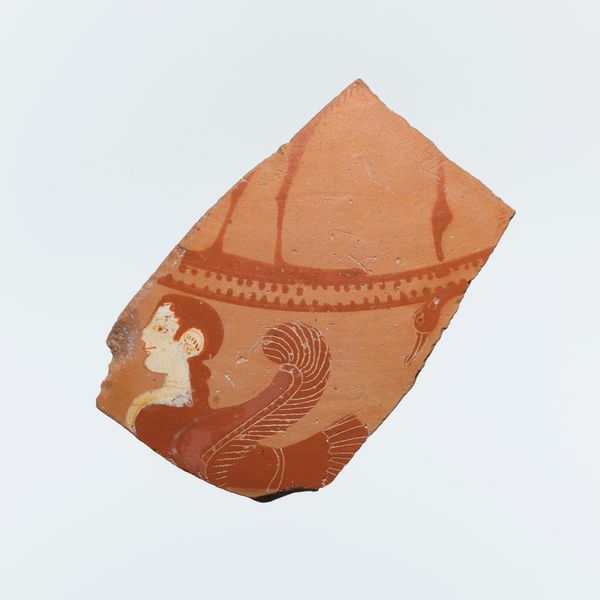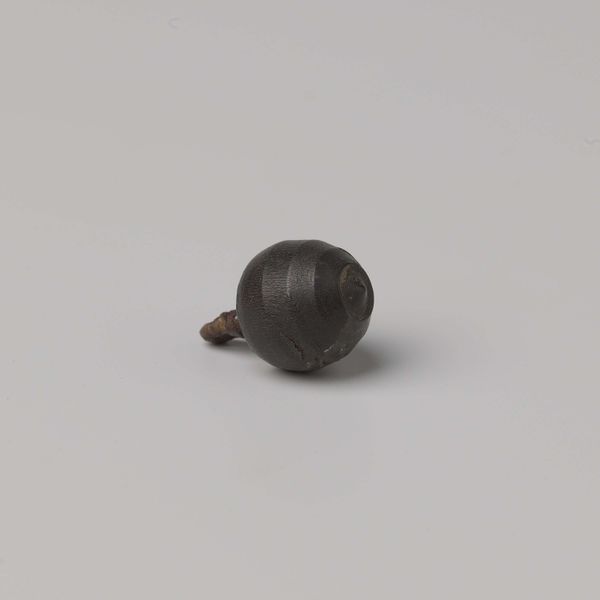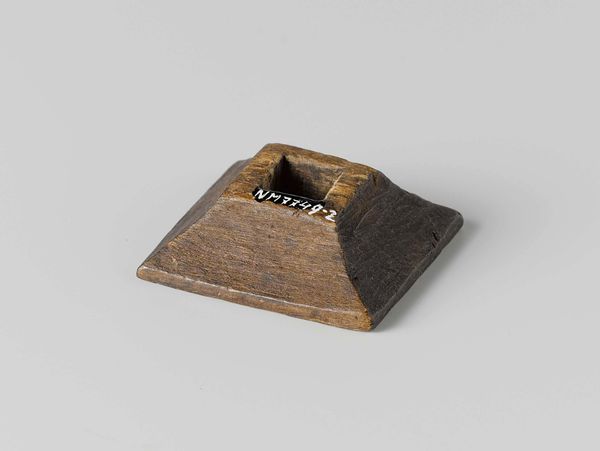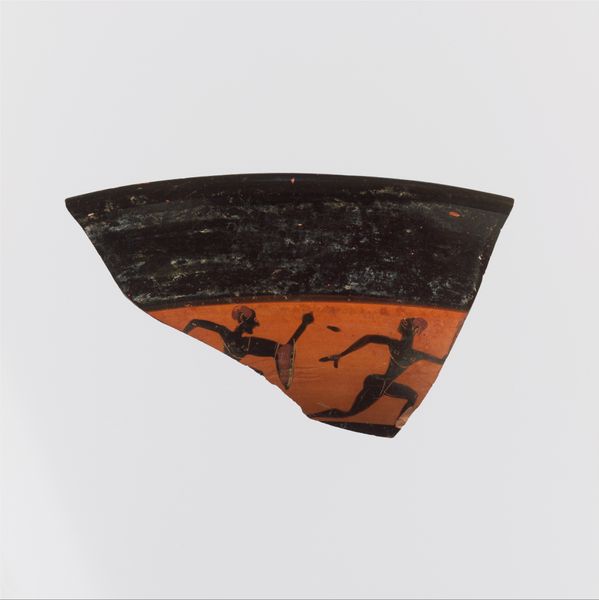
Fragment of a terracotta kylix: band-cup (drinking cup) 550 BC
0:00
0:00
drawing, ceramic
#
drawing
#
greek-and-roman-art
#
ceramic
#
vase
#
figuration
#
roman-art
#
geometric
#
ancient-mediterranean
#
arch
#
history-painting
Dimensions: 2 3/16 × 2 1/4 × 1/8 in. (5.5 × 5.6 × 0.3 cm)
Copyright: Public Domain
Curator: Here we have a fragment of a terracotta kylix, a drinking cup, dating back to 550 BC. Editor: My first thought is that this piece is so incredibly ancient, yet something about its minimalistic lines still feels surprisingly fresh. Curator: Indeed. Though just a fragment, it speaks volumes. What we're seeing is an example of ancient Greek art, likely from Athens. It reflects a society deeply invested in both aesthetics and ritual, given its function. The figure depicted appears to be some kind of fantastical, almost heraldic animal—it evokes questions about its cultural symbolism, and its significance in the specific drinking rituals this vessel would have served. Editor: Right, this is not just decoration. Looking closely at this hybrid creature—the details in the rendering of what might be the lion’s mane or maybe some canine variation—the repetitive slash marks suggesting ribs – it points me to connections between death and celebration, consumption and transformation. Do we have insight into the identity or potential artist behind this vessel? Curator: Unfortunately, like many works of this era, the artist remains anonymous. This cup comes to us via the Metropolitan Museum of Art. Think of the gatherings, the symposia where a piece like this would have been present! What stories it might have been privy to... And I think your point about that duality rings especially true, reminding us of the essential complexities underpinning cultural rituals. Editor: Agreed, this piece whispers across millennia—while literally shattered—this fragment presents a compelling intersection of life and death, excess and restraint. Curator: Well said. It truly makes you reflect on our connection with antiquity and those cyclical returns. Editor: I'm struck by how art objects serve as conduits for collective experience, and for personal projection through iconographic symbols—very powerful.
Comments
No comments
Be the first to comment and join the conversation on the ultimate creative platform.

